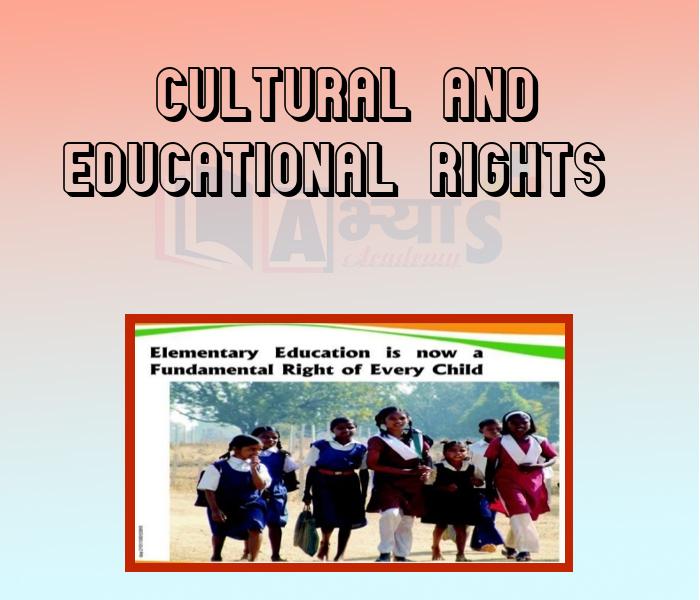Cultural And Educational Rights










Cultural And Educational Rights
Cultural And Educational Rights (Art 29-30): As India is a country of many languages, religions, and cultures, the Constitution provides special measures, in Articles 29 and 30, to protect the rights of the minorities. Any community, which has a language and a script of its own, has the right to conserve and develop it. No citizen can be discriminated against for admission in State or State aided institutions.
All minorities, religious or linguistic, can set up their own educational institutions to preserve and develop their own culture. In granting aid to institutions, the State cannot discriminate against any institution on the basis of the fact that it is administered by a minority institution. But the right to administer does not mean that the State can not interfere in case of maladministration.
In a precedent-setting judgement in 1980, the Supreme Court held that the State can certainly take regulatory measures to promote the efficiency and excellence of educational standards. It can also issue guidelines
Which of the following are correct : (a) In granting aid to institutions, the State cannot discriminate against any institution on the basis of the fact that it is administered by a minority institution. (b) No citizen can be discriminated against for admission in State or State aided institutions. | |||
| Right Option : C | |||
| View Explanation | |||
Which of the following Article of the Indian Constitution protects the interests of the minority classes ? | |||
| Right Option : B | |||
| View Explanation | |||
Which of the following Article of the Indian Constitution empowers the minority classes to establish and administer educational institution ? | |||
| Right Option : C | |||
| View Explanation | |||
Students / Parents Reviews [10]
Being a parent, I saw my daughter improvement in her studies by seeing a good result in all day to day compititive exam TMO, NSO, IEO etc and as well as studies. I have got a fruitful result from my daughter.

Prisha Gupta
8thAbhyas Methodology is very good. It is based on according to student and each child manages accordingly to its properly. Methodology has improved the abilities of students to shine them in future.

Manish Kumar
10thIt has a great methodology. Students here can get analysis to their test quickly.We can learn easily through PPTs and the testing methods are good. We know that where we have to practice

Barkha Arora
10thAbout Abhyas metholodology the teachers are very nice and hardworking toward students.The Centre Head Mrs Anu Sethi is also a brilliant teacher.Abhyas has taught me how to overcome problems and has always taken my doubts and suppoeted me.

Shreya Shrivastava
8thIt was a good experience with Abhyas Academy. I even faced problems in starting but slowly and steadily overcomed. Especially reasoning classes helped me a lot.

Cheshta
10thA marvelous experience with Abhyas. I am glad to share that my ward has achieved more than enough at the Ambala ABHYAS centre. Years have passed on and more and more he has gained. May the centre flourish and develop day by day by the grace of God.

Archit Segal
7thIt was good as the experience because as we had come here we had been improved in a such envirnment created here.Extra is taught which is beneficial for future.

Eshan Arora
8thMy experience with Abhyas academy is very good. I did not think that my every subject coming here will be so strong. The main thing is that the online tests had made me learn here more things.

Hiya Gupta
8thAbhyas is a complete education Institute. Here extreme care is taken by teacher with the help of regular exam. Extra classes also conducted by the institute, if the student is weak.

Om Umang
10thOne of the best institutes to develope a child interest in studies.Provides SST and English knowledge also unlike other institutes. Teachers are co operative and friendly online tests andPPT develope practical knowledge also.
